We're selling another of our "loved back into life houses" but there's not a lot about that that is new. As a family we have moved more than most. Fourteen times including a number of short-term rentals and two holiday homes. We've lived in five locations on the island of Ireland. Antrim's Ballycastle, Belfast, Kilkenny, Donegal and Dublin.
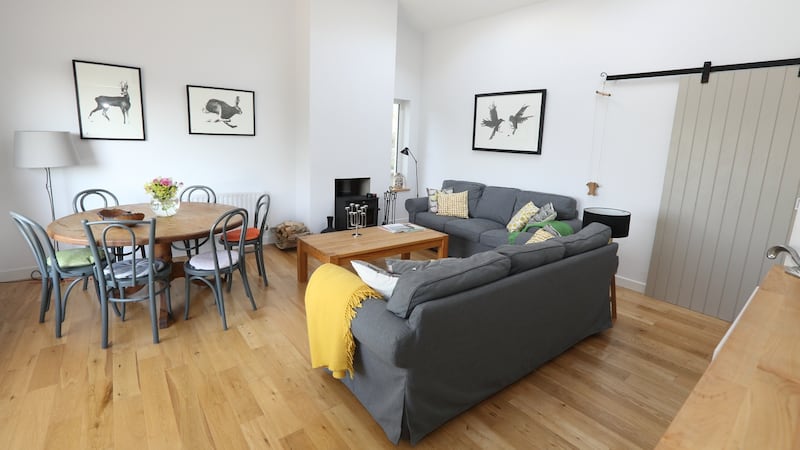
Throughout our careers as managers in child and family services, job changes followed our moves and, at other times, career opportunities presented themselves and we followed. In short, there was neither rhyme nor reason. Our penchant for moving has been viewed by some as brave, by others, mad.

Our children have been generous about this aspect of our collective lives. Our daughter, Issy, whose career is in interior design, believes that in resolutely holding onto significant objects and pieces of furniture along the way, that the sense of “home” was always retained. Our other daughter, Mide, reflected philosophically in her wedding speech last year that many of the friends gathered for her wedding, would not have been met if we had stayed in one place.
It might be a stretch to say that my husband Diarmuid and I have always “enjoyed” the process of moving house. We’re a good team. He does the technical detail and spatial stuff. I, I am told, have a good eye when it comes to interiors. On looking back, it was the sight of a lovely house that had been neglected and cried out for attention and love that always managed to seduce.
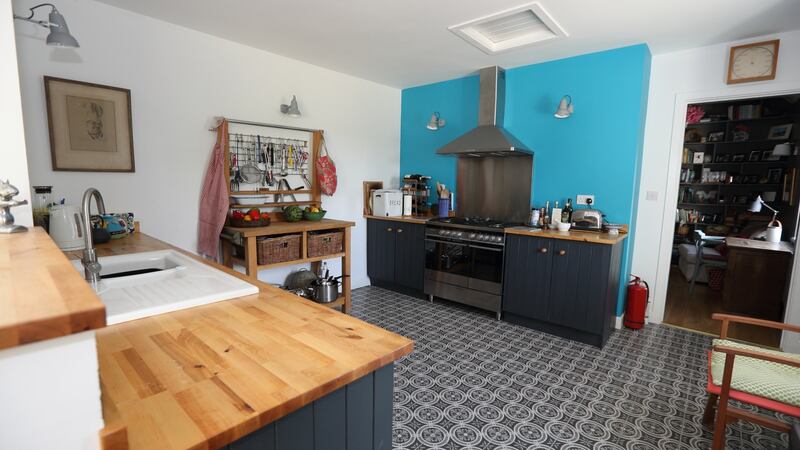
We have reclaimed derelict cottages – two. A detached Edwardian house with beautiful original features, covered in the 1960s to “save on dusting”, a small two-up two-down little dote in Ballycastle and a “subsiding” 1930s semi-detached house in Kilkenny. Our most recent project is a mid-terrace 1918 house in Belfast.
Along the way we’ve learned enough to fill a tome but here we share a few ideas.
Love the house and imagine its future
Without exception each of the houses we have lived in threw us surprises. Covered exquisite tiled floors; a hawthorn hedge overgrown for years; the way the sun starts at the back of the house and by the end of the day shines into the front rooms; the loveliest old coat hooks locked away in a cloakroom; brass finger plates on panelled doors; a small little window with deep sill that just needed to be cleared and cleaned and painted to allow in the softest of light.
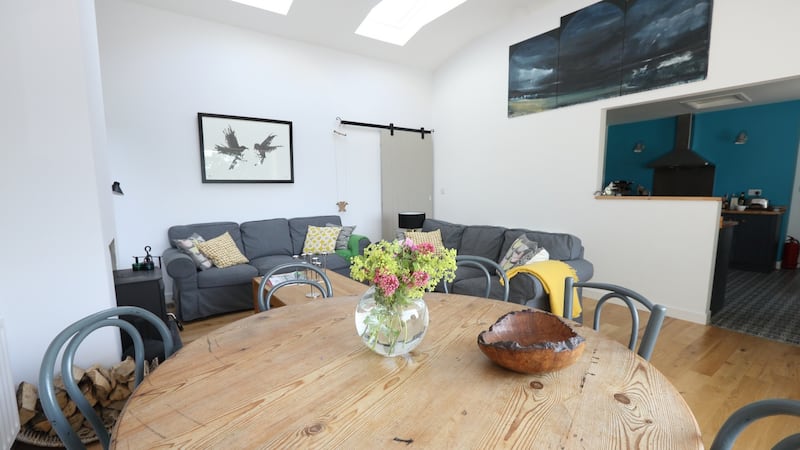
Our learning . . . don’t rush it; use interior magazines, Pinterest, starting a board for each room, check out websites but, vitally, first get the feel of the house.
Use an architect
In thinking through possible work to the Edwardian house in Belfast, we had some ideas but then, through the Royal Society of Ulster Architects (RSUA), we identified an architect, William Moore (Moore and Joyce) who, on our initial meeting, turned our ideas on their head. Why he asked would you do something here? What would possess you to think that that might work there? He was right, we were wrong. Through a process of exchanged ideas, we embarked on one of our nicest projects. We have worked with William more than once, as have friends.
Love your builder
We have been very lucky with all of our builders. Truth is that we have worked on each relationship. Respecting the skill and knowledge of all those working on our properties, as well as having fun, has been special. I have an image of one builder who insisted on very early morning meetings with us, entering our bedroom shouting as he entered, “‘Wakey, wakey John and Yoko”. We don’t ever take them for granted and have reaped the rewards in many ways.

Don’t cut corners
Money is finite when building. We have always bought the essentials but good essentials. Other stuff has waited; for example, we bought a range oven, a large fridge and maple floor on one project and waited quite a while for the kitchen. We also try to avoid the temptation to buy cheap temporary stuff; despite best intentions it will be there for a while so choose carefully when it comes to what to buy and what not.

Importantly while you have the builders in, get all the work you can afford done, bringing them back costs a lot of money.
Make mistakes and survive
It takes confidence to embark on house renovation. Some people get overwhelmed; some don’t. With an architect and a good builder, the big things will be avoided but mistakes do happen. Choosing the wrong paint or the wrong fabric for example. We take time, get advice, try swatches and colours and, if possible, get stuff on trial. With buying online, mistakes are easily rectified. Our biggest mistake was not putting insulation under a wooden floor, but then cosy rugs saved the day. If we’ve learned anything it is to be brave and bold and to trust ourselves. Taste is individual. No two people generally like the same style.
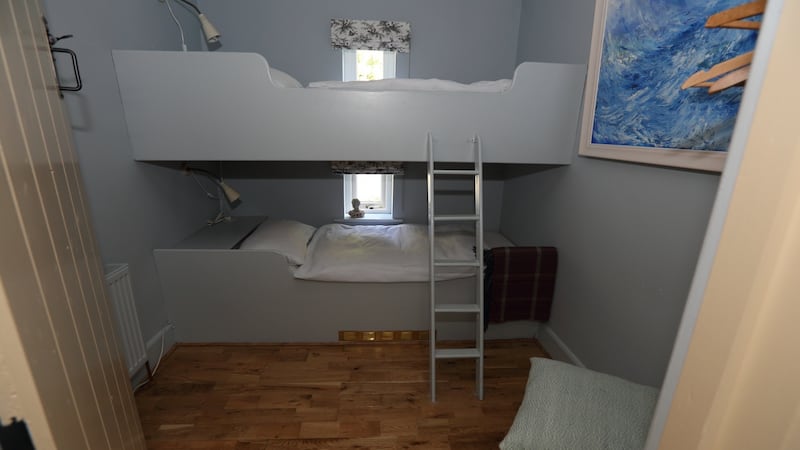
A good indicator of having hit the right note is how a house feels when you close the door behind you after arriving home from a hard day. If it embraces and welcomes then that’s as much as you need or should care about.
Let go of stuff
Moving a lot requires assessment and re-assessment about what is taken and what is left behind. It encourages de-cluttering because one simply has to confront the stuff that remains hidden or indeed, in full sight but unseen. Those awful lamps you hate, those unwanted bedside tables that are there, just because they serve a purpose but are ugly and without aesthetic. In planning a move, leave as little room as possible for unnecessary storage in your new abode. That has worked and continues to work for us.
One of our moves entailed moving into a house vacated by the owner on his admission to hospital. He did not return, nor did his children. We cleared out their sentimental keepsakes, memories and personal objects. Clearing out the entire life of a family is sobering and not an experience we intend to repeat or inflict on others.
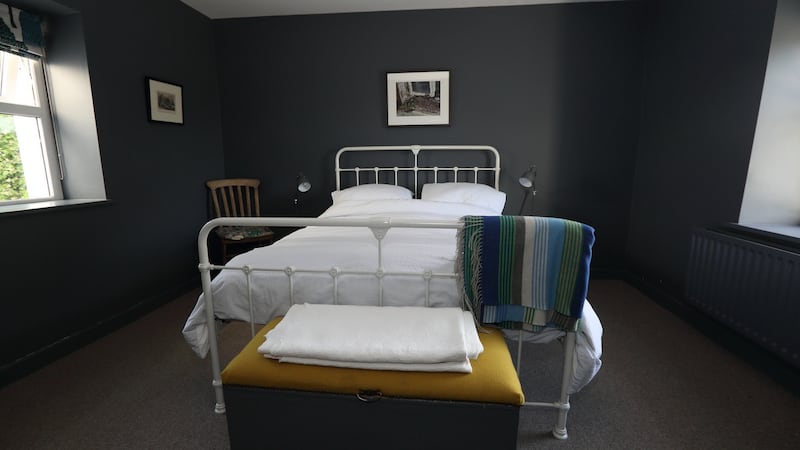
Letting go of our latest endeavour
Our latest project in Donegal is now for sale – a beautiful long cottage. It has been a nine-year project. The transformation has been staged but began with a house that required us to cover ourselves in “all-in-one” protective suits to deal with the detritus left by animal-loving people. Not a great memory and lots of excruciatingly hard work. But it is a house ready for a larger group of people now. It provides privacy but is not isolated. It is a refuge that provided a friend with a base in which to complete her PhD. It is incredibly child friendly, attested to by multiple home exchanges and the cards that children left on their departure, singing its praises. In short, it is a joyous and liberating place to be.
As a bonus, we have decided to leave a lot of the contents behind us too, many of which have served us well. As ever though as we depart, we will have mixed feelings of sadness, achievement but also excitement about what happens next.
Miriam Uhlemann’s house, Leap Cottage, is in Ardara, Co Donegal. It’s for sale through DNG Dorrian at €295,000.


















